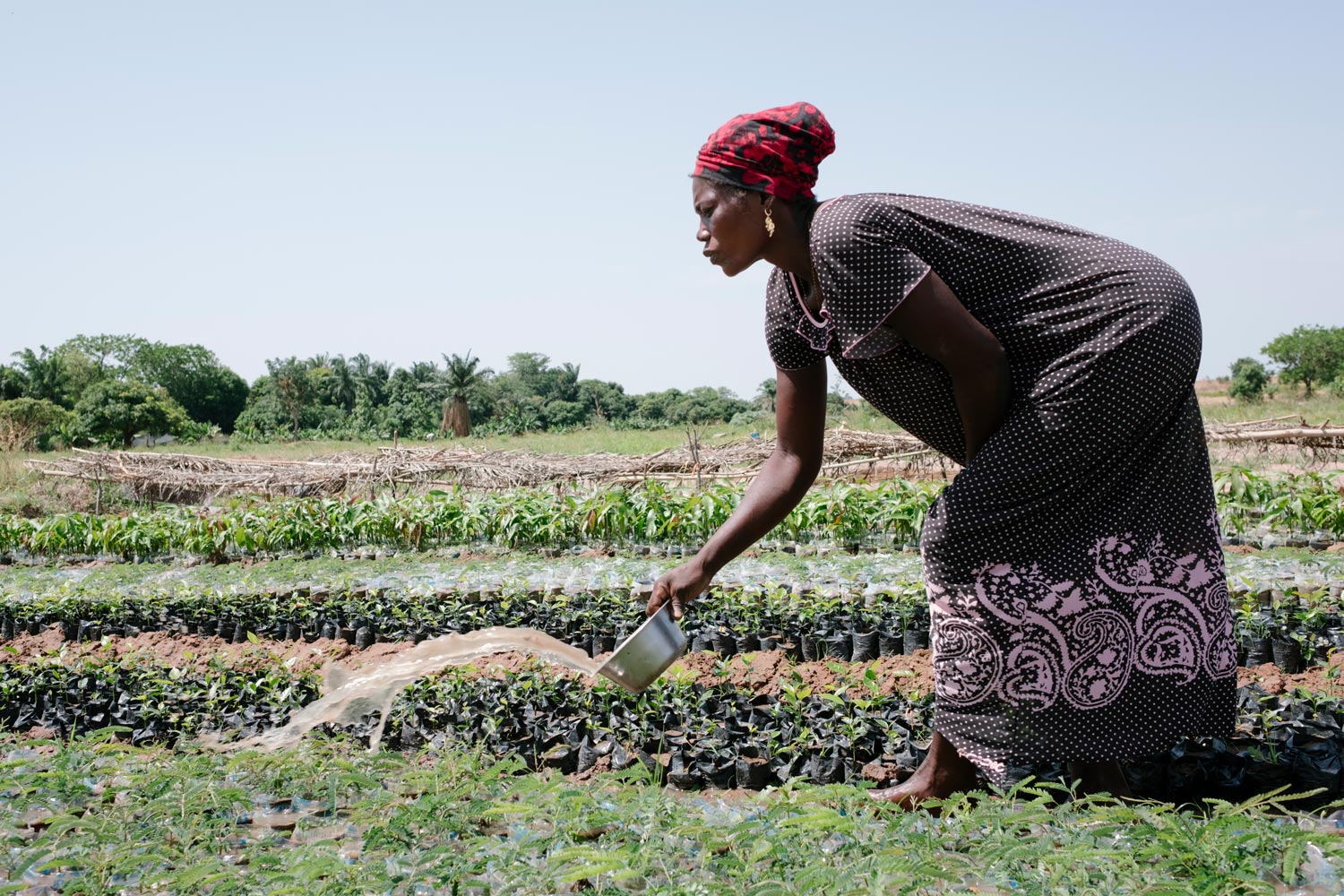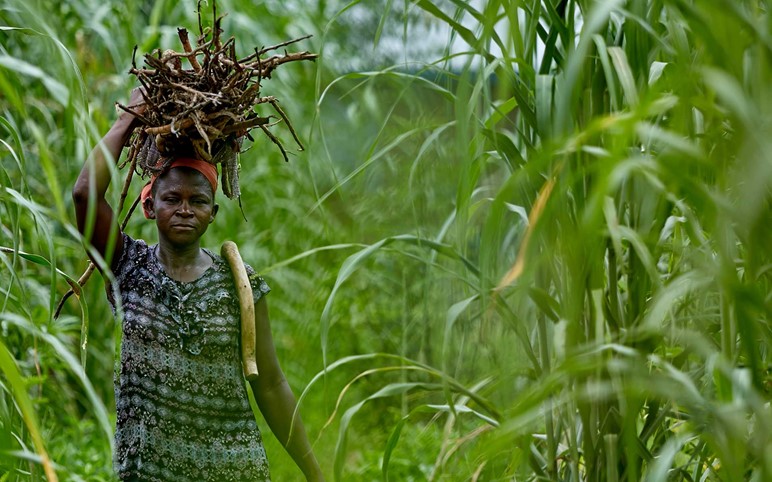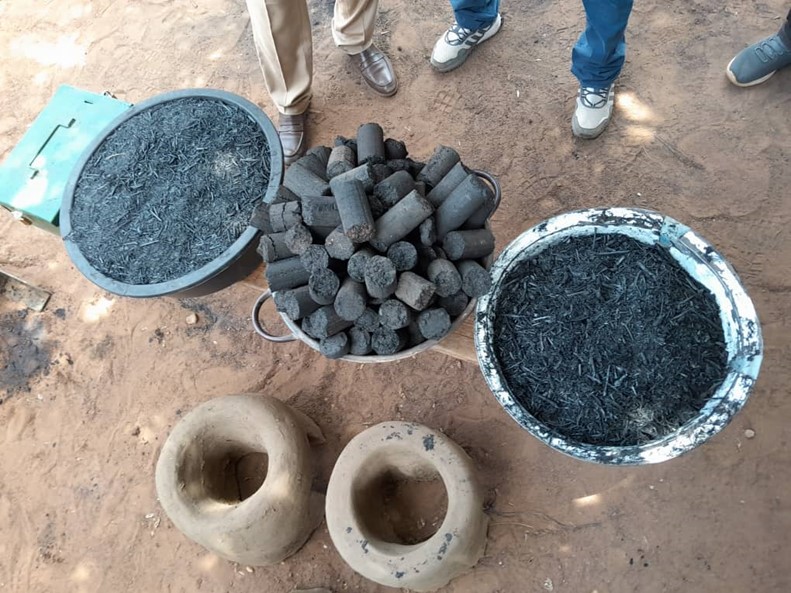With wildfires on the increase around the world, and concerns these will increase with the return of El Niño in 2023, a creative approach to managing this problem is being trialed in one of the driest regions of Africa.
As part of the Ecosia-funded Daka River project in northern Ghana, local communities are taking part in a pilot study to turn a problem that is fueling the climate crisis — dried grass — into a solution: grass briquettes!
Restoring the Daka River

Building on the work done since 2018, this phase seeks to protect communities on the Daka River catchment area in the Mion, Yendi and Gusheigu Districts.
For many people in northern Ghana, the Daka River is a vital source of water for drinking, washing, cooking, and farming. But a rapid loss of trees and soil fertility, and the effects of the climate crisis, mean that the water level can easily run low, and the river dries out for months on end.
Tree Aid is working with local communities to help restore the area around the river where soil has become degraded due to climate change, providing income and food security for future generations.
Three years into the project, Tree Aid has grown nearly 1.5 million trees in this area of the Sahel, giving hundreds of local farmers the skills they need to restore and protect the local environment, including the river itself.
Turning a problem on its head

In this region, wood is everything — many rural communities rely on firewood as a source of energy for cooking or earning a living, and even bushes count as a source of energy. This is a major reason for deforestation in African drylands. That’s why Tree Aid really needs to consider this pressure on the land when it comes to planting new trees, to ensure their survival. Sometimes we have to think outside the box, and in the case of grass briquettes, this is exactly what we did.
From seeing a similar idea trailed in a different part of Africa, Country Director Jonathan Naaba put together a pilot with academics in Ghana, to research how effective grass briquettes could be in removing some of the pressure on existing trees.
Supported by Ecosia, the project team in Ghana, working with two masters students, have rolled out a pilot with ten communities, bringing the compressor technology and know-how to the local level. For example, it’s essential for a binding agent to be added to the charred grass, and this is where communities themselves have stepped up and got creative, using cassava dough (which is high in starch) rather than relying on purchasing these materials.
Sometimes we have to think outside the box, and in the case of grass briquettes, this is exactly what we did.
Success so far

Briquettes are one of the best and most efficient forms of fuel for cooking. Women in these communities are really seeing the difference as the grass briquettes don’t stain their cookware, or create smoke, and only a few are required for six hours of cooking. This means that they can sell spare briquettes to provide additional income.
The grass briquettes are being used for cooking both outside the home and inside – it's essential in the rainy season and as the briquettes produce so little smoke, this new cooking fuel will also improve women’s health.
So far, the pilot is proving very successful, and popular – the men like to get involved in creating the briquettes with the compressor machines – and we look forward to seeing the results of this research over the coming years.
How are grass briquettes made?

Firstly, dried grass is collected from around the base of trees where it would otherwise act as a fuel source for wildfires and destroy trees – both those recently planted and existing trees that make up the Great Green Wall, running across the Sahel.
This dried grass is then burnt to produce a type of charcoal or carbonized organic matter which can light easily when being used for cooking.
The communities involved are getting really creative. A "binder" ingredient is vital to ensure the charred organic matter sticks together. Rather than using income on buying a product, people have developed a cassava dough that works just as well.
The mixture is then put through a hand-operated compressor which creates uniform-sized briquettes, which are dried and easy to transport to use for cooking or to sell at the market for additional income.
The trees themselves are also lending a hand – flaking bark from certain species of trees can also be used to help create the briquettes. When soaked, it becomes slimy and starchy; perfect for binding grass briquettes!
With Ecosia, we look forward to exploring this pilot further. It may be that grass briquettes, alongside nutrition gardens, could provide an alternative livelihood for people in the Daka river districts.
